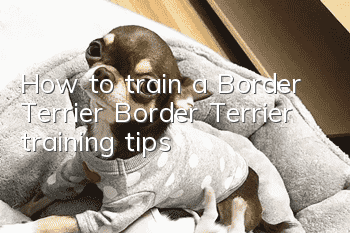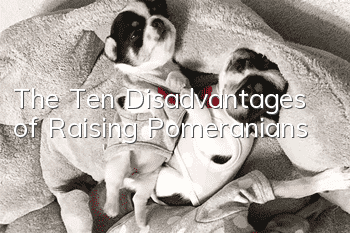How to train a Border Terrier Border Terrier training tips

How to train Border Terriers? Many dog parents want their dogs to be obedient and smart. Such steps require training. Border Terriers are not common in China, so parents who raise Border Terriers may not know how to train Border Terriers. .
The Border Terrier's ancestors originated from the Cheviot hills on the British border and are considered one of the oldest terrier breeds in Great Britain. As a pure "working terrier", Border shepherds and sportsmen have preserved the dog's special bloodline over the generations, allowing the dog to be found on every estate in the Border region
1. How to train the Border Terrier
First, let your dog Border Terrier sit on the ground according to your instructions. This posture is helpful for your dog Border Terrier to concentrate, so it is of great benefit to any training you will do next.
Then you use gestures and words to tell it at the same time: "Don't move here." At this time, you leave your dog, not too far, just to see if the dog can stay still when you leave. If the dog does not move from its original position, walk back to encourage it, give it some food, stroke its neck and shoulders, and let the dog see your expression of appreciation.
You know, a dog cannot understand you at all, no matter how smart the dog is. If you sometimes think your dog is "empathetic", it's just because it remembers the way you praised it. On the contrary, if you find that the dog moves after you left, you should immediately go back and repeat the training just now, and use your expression and body language to tell the dog: The person is not satisfied with its performance just now.
Only by repeating this process can the dog understand what you really mean by asking it to "don't move here." In the future, you can gradually extend the time and distance you leave, and the dog will gradually get used to waiting for you to come back after doing things.
2. Are Border Terriers obedient?
Typical terrier temperament. Mild-tempered, affectionate, obedient to orders, easy to train, fond of playing, and aggressive.
- Essential tools for dog bathing
- Daily care for Dalmatian nails
- How to do toilet and urination training for dogs?
- Three things to pay attention to when choosing clothes for your dog
- Puppy deworming and vaccination sequence
- How to train a dog not to eat randomly? Dogs are prohibited from picking up food anywhere!
- Introduction to symptoms of early pregnancy in Chihuahuas
- How to treat lactation in female dogs after giving birth?
- What should I do if my dog poops and urinates indiscriminately? Correct the dog’s pooping and urinating behavior!
- Why do Samoyed dogs vomit? These are the reasons why Samoyed dogs vomit!



